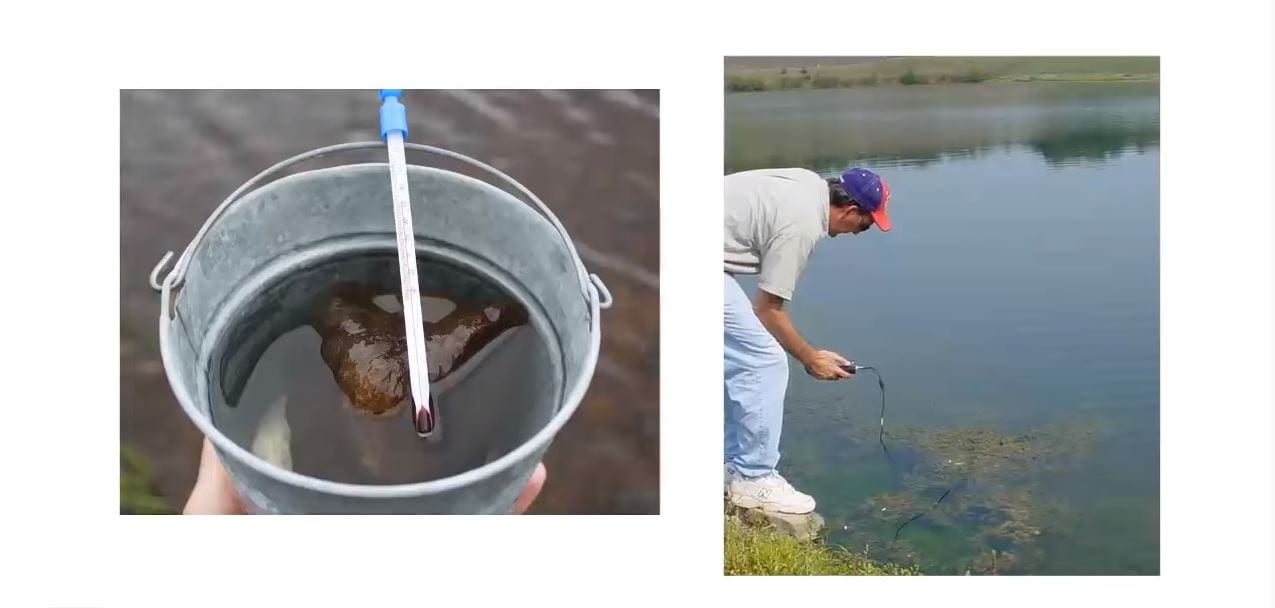
Water values - the alpha and omega of a healthy pond
Water values - the alpha and omega of a healthy pond
Clean, clear water and the right water parameters are the most important things in a pond. They enable a balance in the ecosystem and ensure healthy pond inhabitants. It is therefore of great importance to always have the water values in view. These should also be examined regularly and, if necessary, regulated with water treatment agents. But which values play a role in water? And what are the ideal values? You can also read to know how long do koi fish live
pH between 7.5 and 8.5
Carbonate hardness (KH) between 5 and 12 ° dH
Phosphate below 0.035 mg / L
Ammonium below 0.5 mg / L
Ammonia 0 mg / L
Nitrite below 0.1 mg / L
Nitrate below 30 mg / L
Many factors influence these values and can lead to a change. The metabolic products of the pond inhabitants play a role here, the entry into the water from outside, the vegetation or solar radiation, which in turn favors algae growth. If something does not work properly with the pond technology, this can influence the water values and provide conclusions. In the following we consider what exactly the individual water values express.
PH value
The pH value says something about the base or acid content of the water. The neutral pH value is 7 and is regarded as an ideal value. Acidic water is present when this value is lower, while basic water is present when this value is higher. Even rainwater or the supply of tap water can lead to a change in this value. In addition, there are changes due to the CO2 that the plants give off to the water. Therefore, the pH is higher in the morning than in the evening. A stronger aeration of the pond reduces the CO2 value and increases the pH value. When measuring the pH value it should be ensured that this is not too much fluctuates as this is a stress factor for the fish.
Ammonium and ammonia
Ammonium (NH4 +) is a metabolic product that 75 percent of the fish excrete through the gills and 25 percent through the urine. Ammonium itself is quite harmless. However, natural processes in the pond convert ammonium to ammonia (NH3), which is very toxic for the fish. With a well-running filter, filter bacteria convert this toxic ammonia into less toxic nitrite. However, if there are too few filter bacteria, which can occur at the beginning of the season with a freshly started filter or a pond that has not yet run in, then ammonia will accumulate in the pond water. When measuring, the value should be 0 mg / L. At 0.2 mg / L it is advisable to add starter bacteria to the filter and clog the pond more strongly ventilate. However, if this does not help and the value continues to rise, a water change must be made.
Nitrite and nitrate
We briefly mentioned above that nitrite is formed when filter bacteria, so-called nitrosoma bacteria, convert ammonia. Nitrite is a little less dangerous than ammonia, but in the long run it is still toxic for the fish. Nitrite blocks the hemoglobin in the blood of the fish so that it can no longer bind oxygen. This causes the fish to suffocate. The means of choice are also the increase in bacteria through starter cultures and the aeration of the pond. If the value does not drop, a water change is also recommended.
The bacteria convert nitrite into nitrate. In turn, nitrate is absorbed by plants. If there are not enough plants in the pond, nitrate also serves as a nutrient for the algae. If the value is zero, it indicates the optimal balance between the uptake of plants and the excretions of the fish.
Carbonate hardness and total hardness
Another water value is the carbonate hardness, or KH for short. This value indicates how large the buffer capacity of the water is. This value shows how well the entire pond can compensate for fluctuations in the pH value. Many ponds tend to become over-acidic over time. Therefore, the KH value should be checked often. Problems can arise, especially with algae in the pond.
The total hardness in the pond is an indicator of the dissolved minerals in the water and is an important value for biological processes. Mainly it is about the minerals calcium and magnesium, which make a statement about whether the water is soft or hard. The fewer minerals are dissolved in the water, the softer the water is. And the softer the water, the worse the biological processes. It can even come to a standstill. Since all pond inhabitants use minerals, this value should also be checked regularly and adjusted if necessary
Phosphate
Phosphate is not only a plant nutrient, algae also need it to grow. Phosphate can be found in the soil, but also in fish feed or in fertilizer. Usually the phosphate is bound so that neither plants nor algae can get to it. However, if there is a lack of oxygen, this phosphate is converted into the plant-available iron-2-phosphate. This can encourage increased algae growth. A value of 0.035 mg / L is sufficient for this. In addition to the aeration of the pond, Alg-Stop also helps to bind this free phosphate and make it no longer available for the algae.
In order to enjoy a healthy pond, the water values should be checked regularly to see whether they are in the optimal range. Only then is there a good balance. The right water values are essential for good water and healthy pond inhabitants.